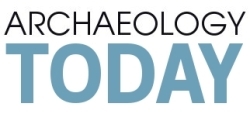
January 19th, 2014
Genome Study Reveals New Insight on Dog Domestication
The results of a recent study of canine genomes suggests that dogs and their wolf cousins share an evolutionary history that is considerably more complex than previously thought, pointing to a common ancestor that lived between 11,000 and 34,000 years ago and that the earliest dogs may have first lived among hunter-gatherer societies, before the advent of agriculture.
It challenges the popular theory that humans domesticated dogs around the time that they developed agriculture, and that dogs evolved from a single wolf population or group. (Popular Archaeology)
Bones From Human Sacrifice at Tenochtilan Ceremonial Complex
Fragments of human bones that exhibit cut marks and prolonged exposure to fire have been discovered through various excavations in the Sacred Precinct of Tenochtitlan (located in Mexico City). These skeletal remains are from individuals, such as children, slaves and captured warriors, who were sacrificed during religious festivals. (Past Horizons)
Archaeologists may have found remains of Alfred the Great
Archaeologists have identified a piece of bone they believe may have belonged to the English king Alfred the Great. The section of human pelvis, carbon-dated to within the lifetimes of Alfred the Great and his son Edward the Elder, has been found in Winchester, the first solid result in centuries of attempts to find the last resting place of one of the most famous English kings. (The Guardian)
Severed Heads Eaten by Dogs in Roman Times
Forensic techniques have shed light on the gruesome fate of dozens of people whose severed heads were thrown into open pits 2,000 years ago and left there to decompose. Excavated in the heart of London more than 25 years ago and dated to between 120 and 160 A.D., the skulls are believed to have belonged to defeated gladiators or victims of Roman soldiers’ practice of “headhunting,” in which heads of enemies were displayed as trophies. (Discovery News)
Ancient Sican tombs found in northern Peru
Archaeologists in Peru’s northern Lambayeque region have discovered an ancient cemetery with 35 tombs believed to be up to 1,000 years old. The tombs -containing skeletal remains, ceramics, textiles and gold-plated copper pieces- are thought to be of a pre-hispanic Sican descent. (Andina.com)
Earliest Use of Steel in Britain Identified at Scottish Hillfort
Archaeologists have identified examples of the earliest use of steel in the British Isles from a site in East Lothian. The site, an Iron Age hill fort known as Broxmouth, was excavated in the 1970s, however the discoveries are only now being published.
As part of the re-examination of the findings at Broxmouth, new analysis of some iron artefacts has found that they can be dated to 490-375BC. (Past Horizons)
Archaeologists discover ancient death chambers used for execution, torture in Bursa
Archaeological excavations that have been carried out in the northwestern province of Bursa have discovered 2,300-year-old dungeons used for execution and torturing during the Bithynia Kingdom era. Archaeologists discovered that the dungeons, which contain a “bloody well,” “torture chamber” and “corridors connected to tower,” used horrific execution methods. (Hurriyet Daily News)
Archaeologists uncover new pharaoh in Egypt
Archaeologists believe they have discovered the remains of a previously unknown pharaoh who reigned more than 3,600 years ago in Egypt. The skeleton of King Senebkay was uncovered at South Abydos in the province of Sohag, about 500 km south of Cairo, by a University of Pennsylvania expedition working with the government, the Egyptian antiquities ministry said. (Haaretz)
Well Preserved Iron Age Village Uncovered in Denmark
During evaluation of land prior to the construction of a new hospital in Aalborg, Northern Denmark, archaeologists uncovered an Iron Age village dating back around 2000 years. The settlement differs from other sites of this period because of its well preserved condition, including a number of houses complete with fireplaces, chalk floors and cobbled paving. (Past Horizons)
Bath tunnels of king’s daughters discovered under Turkey’s second largest castle
Two secret tunnels have been discovered under Turkey’s second largest castle, in the northern province of Tokat’s Niksar district. The tunnels date back to the Roman period, and it has been claimed that one of the tunnels was used by a Roman king’s daughters in order to go to the bath in the Çanakçi stream area. (Hurriyet Daily News)





